As part of our team’s internal training, I recently hosted a session on the changing local search landscape. This post acts as a summary of the talk and assumes some level of knowledge of local search ranking factors and experience using Google My Business.
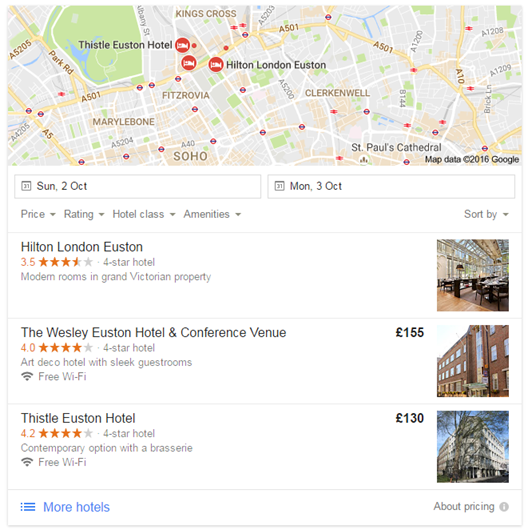
Why should I care about local search?
For certain businesses, a presence in Google’s local map pack is critical to gain search exposure. The local search pack is usually located directly below paid search listings and ahead of the standard “10 blue links” and its presence is not just limited to queries containing a location.
In competitive industries such as travel, which are increasingly dominated by Online Travel Agencies (OTAs) such as Booking.com, presence in local packs is a SERP opportunity not currently available, in the traditional sense at least, to aggregators. Property owners can gain control of their location listings and reduce leakage to aggregators.
Google 3-pack local results appear for 93% of Google searches with local intent, so the potential is strong. As you would expect, the search engine has increasingly begun to monetise this lucrative space with the addition of paid local-pack ads and in the travel sector expanding the roll-out of Google Hotel Ads which tend to see brands compete against 2 or 3 OTAs.
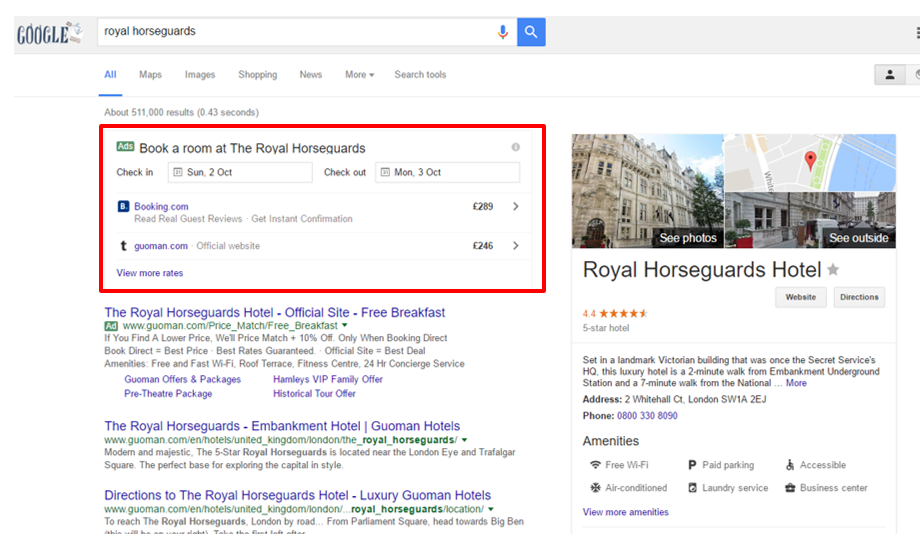
Consumer Behaviour Changes
As well as changes to the SERPs, consumer habits are also changing. The growth of mobile has resulted in a much higher proportion of location dependent searches and more Google searches take place on mobile devices than on desktop machines in 10 countries.

Tracking Smartphone Users for Attribution
A recent infographic by Google claims that 54% of smartphone users search for business opening hours, 50% search for a local shop address and 53% search for directions to a local shop. Google obviously wants to be able to connect the loop between online research and physical presence so more value is attributed back to the search engine and particularly AdWords. A recent Adwords white paper Bridging the Customer Journey shows how Google’s tracking of smartphone users can now be used to report back to advertisers on whether a viewed ad later results in a physical store visit.
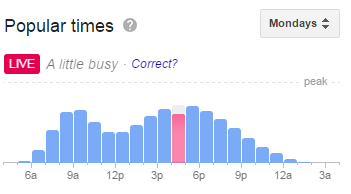
If you haven’t disabled location sharing, Google handily shows you a map of everywhere it has tracked you at https://www.google.com/maps/timeline. This information can be used to present information such as graphs of how busy a location is expected to be at any given time – these now show in real-time.
Local Search Ranking Factors
Local SEO Guide has a good guide to local search ranking factors but in brief there remain 4 main areas which can be manipulated.
Google My Business – Google’s platform for managing local search listings potentially offers quick wins. If this hasn’t been reviewed for a while and locations or information are incorrect or have been omitted this is where you should start. Google My Business evolves fairly quickly with new features being added so it’s definitely worth scheduling regular reviews of your account after you’ve got everything in order – if not you could quickly find Google making its own (often undesirable) changes to the company information it displays your users.
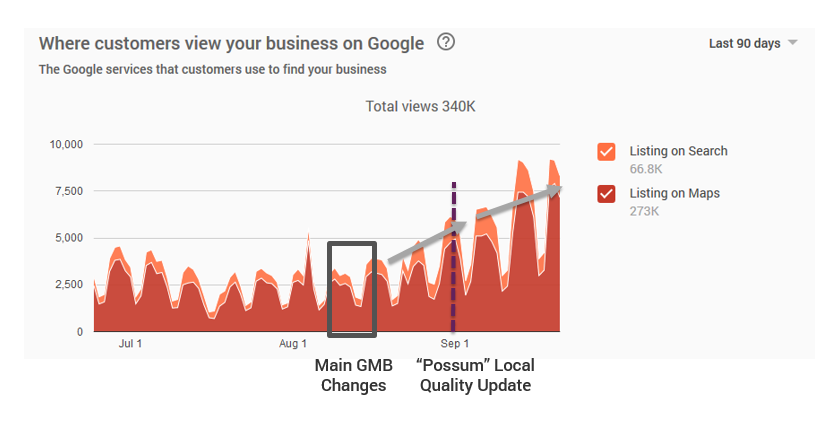
On-page Elements – Name, Address, Phone Number. Easy to manage, there shouldn’t be any reason why this information isn’t right!
Off-site Citations – These are harder to manage due to number of places at which information needs to be reviewed and updated. Various commercial services are available to help manage this process which could be particularly worthwhile when working with multi-location chains.
Link Metrics – Hard to manipulate.
Tracking & Reporting on Local Search
How is Google local search tracked by default? If you haven’t configured any tracking traffic from Google local pack listings is automatically grouped alongside standard Google organic traffic.
That means a click on either of the following three listing types:
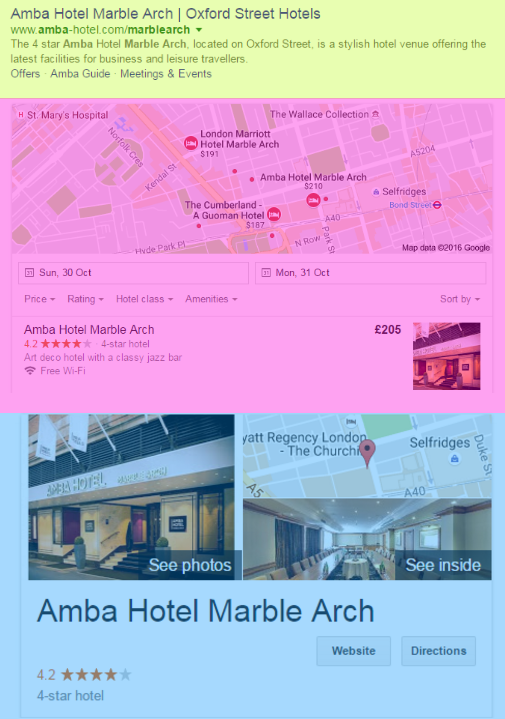 Will appear in Google Analytics attributed to the following Source and Medium:
Will appear in Google Analytics attributed to the following Source and Medium:
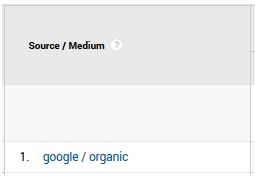
But given local search has its own ranking factors distinct from “10 blue links” results, should this be the case?
Track clicks on local pack listings to attribute conversions to local search
Fortunately, it is very easy to distinguish between standard organic search and Google Local Pack sessions by configuring a simple piece of tagging. Among its many options, Google My Business enables you to customise the URL linked from your listings. It takes only a matter of seconds to swap your standard office or store URL to one with UTM tracking parameters appended.
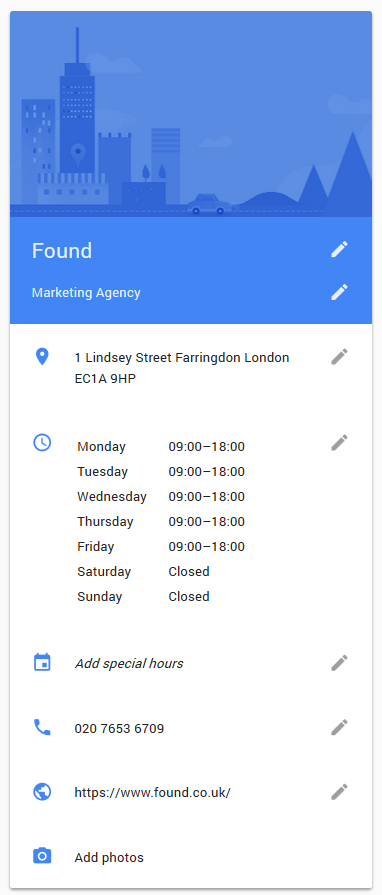
E.g. changing
https://www.site.com/locations/faketon-123-fake-street.html to
https://www.site.com/locations/faketon-123-fake-street.html?utm_source=local&utm_medium=organic&utm_campaign=gmb will ensure that local search traffic remains attributed to organic but that it can also be separated from clicks on traditional listings.
This can lead to interesting insights such as the changing split in organic search behaviour seen below as local search listings are increasingly given more prominence in SERPs coupled with improved local search optimisation.
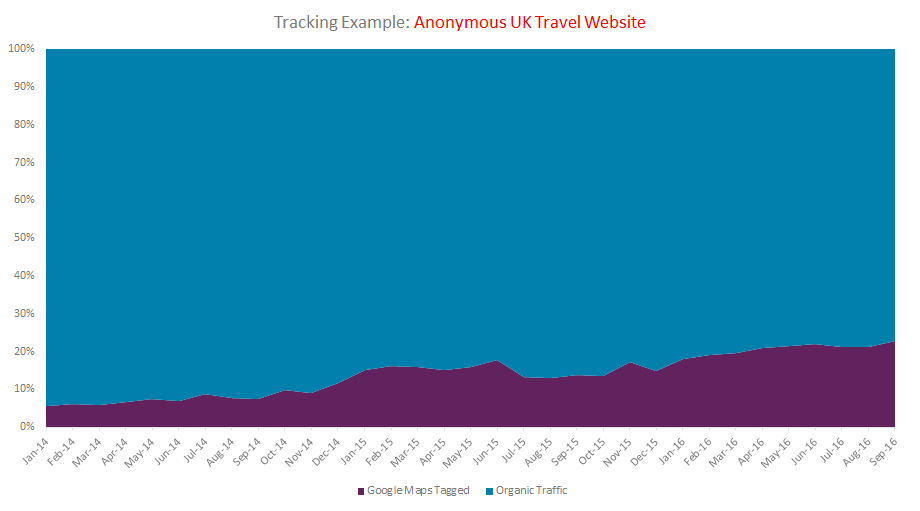
Properly attributing sessions and conversions back to local search traffic can help to justify the investment in local search optimisation.
Google My Business Insights
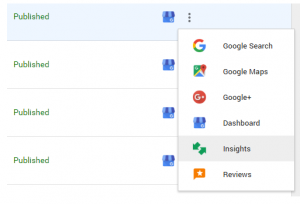
Additional reporting options available with the “Insights” area of Google My Business. This shares statistics, such as the proportion of local impressions that occur from searches for your business name or address compared to those searching for your product or service, the number of overall impressions on Google Maps or standard SERPs and also data on actions users have taken after viewing a listing.
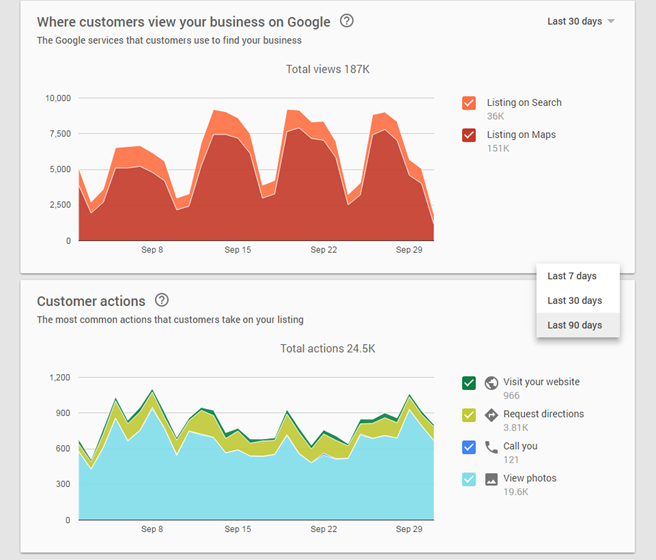
Future of Local Search
As we move into 2025, location-based and local search are set to become even more essential.
If you haven’t updated your local listings or Google Business Profile recently, now is the perfect time to prioritise it for the year ahead!
If you’re interested in how Found could supercharge your digital performance across SEO, PPC, Social and Digital PR, then get in touch today to speak to a member of the team.







